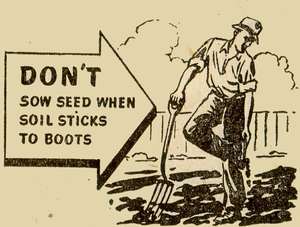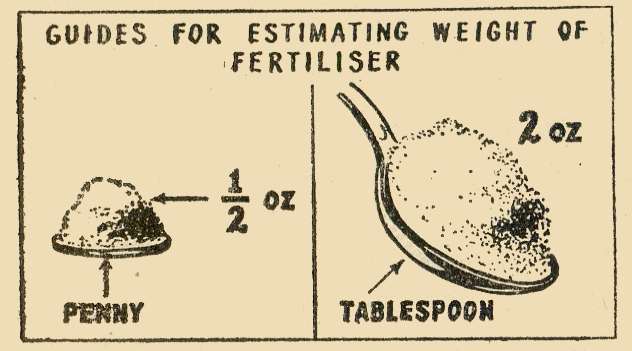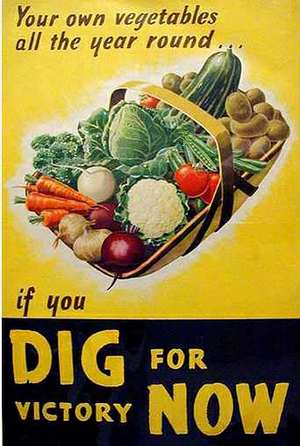 And March is the month when gardeners really begin to get busy putting their plans into effect and starting work to produce this wholesome abundance.
And March is the month when gardeners really begin to get busy putting their plans into effect and starting work to produce this wholesome abundance.
Now, abundance in summer is easy, but sufficiency in winter – especially late winter and early spring – is another kettle of fish. Too many gardeners still fall down on winter production, due to lack of planning.
Your local Parks Superintendent or your local allotment or horticultural society may have produced a plan that suits local conditions and makes adequate provision for winter vegetables.
Or you can still get the Ministry’s cropping plan, not to follow it blindly, but to use it as a guide that you can adapt to meet your family’s likes and dislikes and modify in the light of your knowledge of the kinds of vegetables that can be grown satisfactorily in your neighbourhood.
And it may be worth your while re-reading what was said in the February issue of this “Guide” about the importance of crop rotation.
Any week now, when weather and soil are right, you will want to start sowing and planting. But one word of warning: don’t try to sow seed when the soil sticks to your boots. Wait for a fine spell.
When it is fine and the soil is workable, you will perhaps be making successional sowings of broad beans and spinach as described in the February “Guide”.
You will also be sowing seeds of Brussels sprouts and leeks – both in a special seedbed; parsnips, peas, onions, lettuces, radishes and parsley – where they are to grow on. And you may also be planting autumn-sown onions.
But before getting down to detailed advice on sowing and planting, here are a few brief reminders that may not come amiss.
UPROOT THOSE STUMPS
Clear away those old stumps of Brussels, cabbage and so on and get the land prepared for another crop.
SEEDS
You have no doubt already got the seeds of the vegetables just mentioned – also your seed potatoes, which should have been “sprouted”; but during April and May you may be sowing beet, carrots and turnips, as well as runner beans (perhaps French and Haricots too), kales, savoys, cabbages and spinach beet. Marrows must not be overlooked either, if your family likes them. Make sure you get all the seeds in time.
FERTILISER
You have probably got a supply of a suitable fertiliser containing the three necessary plant foods – nitrogen, potash, phosphorus – with which to dress your land before sowing and planting. If you haven’t, “National Growmore Fertiliser” – a Government recommended product – would suit your needs. 42 lb. will be enough for a 300 square yard plot. The January “Guide” described how to use it.
STICKS AND STAKES
In April you will be sticking your peas, in June your runners. If you intend to grow tomatoes, you will need stakes for them at the end of May when you plant out. Have you got your sticks and stakes or ordered them?
FEED SPRING CABBAGE
In the January “Guide” it was recommended that out of the 42 lb. of “National Growmore Fertiliser”* that you might buy, you should set aside 2 lb. as a top dressing for spring cabbage. Or you can use sulphate of ammonia, applying it at the rate of one ounce per yard run. Lettuces and spinach would also benefit by a similar application. But keep the fertiliser off the leaves.

Don’t forget it is showing the old, pre-decimal penny
LIFT LEEKS
If you grew leeks last season and need the land on which they stand, for other crops, lift the remaining plants and heel them in in a shady spot. In any case, it is not wise to leave leeks too long in their rows.
GETTING THE “ROOT” GROUND READY
As soon as it becomes free, dig over the land you intend for your root crops. Leave it rough until you are ready to sow. In April you can break it down and lightly fork in a dressing of 1 lb. of “National Growmore Fertiliser” to every 10 square yards.


